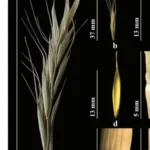In a landmark revelation, archaeologists in Sharjah have unveiled a trove of meticulously crafted stone tools dating back 80,000 years, signaling sustained human presence—and not merely transient migration—in the Arabian Peninsula. The find, anchored at the Jebel Faya archaeological site (FAY‑NE1), not only illuminates prehistoric ingenuity but also propels Sharjah’s bid for UNESCO World Heritage status into the international limelight.
What Was Found
Long, parallel‑edged stone blades—evidence of bidirectional reduction—were excavated during systematic digs between 2012 and 2017. These blades demonstrate advanced flake‑striking techniques inconsistent with random tool use.
Located within a stratified 5‑metre geological profile, the assemblage dates to Marine Isotope Stage 5a, a climatic epoch marked by oscillating aridity and humidity.
Earlier investigations found layers dated 210,000–120,000 years ago, revealing not isolated campsites but potentially four distinct phases of occupation, even during less hospitable dry periods
Expert Insights & Statements
Dr Knut Bretzke, lead archaeologist from Germany’s University of Tübingen, describes the blades:
“It’s like a chef filleting a fish — each strike intentional, each angle calculated.” (khaleejtimes)
Eisa Yousif, Director of Sharjah Archaeology Authority, reflects on the cultural import:
“These tools reflect a profound relationship between people and their land…our shared past continues to shape who we are.” (khaleejtimes)
Simon Armitage, University of London, contextualizes the global impact:
“This is really quite spectacular… it breaks the back of the current consensus view.” (thenational)
Global Significance
Migration narrative revised
While traditional models posit an exodus from Africa circa 60–70 ka, these findings propose Homo sapiens ventured into southern Arabia during MIS 5a—some 125 ka—via the southern coastal route.
Technological sophistication
These blades mark the earliest known evidence of systematic stone‑blade production in Arabia, showcasing planned, efficient craftsmanship.
Resilience in shifting climates
The Jebel Faya record spans green interludes and arid stretches, suggesting early humans repeatedly inhabited—and adapted to—varied environmental conditions

Heritage and Recognition
On July 1, 2025, Sharjah’s ruler Sheikh Dr Sultan Al Qasimi officially decreed formal inclusion of Jebel Faya’s boundaries in the UNESCO World Heritage bid. The UNESCO evaluation session is scheduled for July 7–16 in Paris, with potential listing pending. A successful nomination would elevate Jebel Faya as the UAE’s second UNESCO site after Al Ain (listed in 2011).
Implications for Academia & Tourism
Research dynamics: Encouraged by Jebel Faya’s resilience across dry cycles, multidisciplinary teams (Sharjah Archaeology Authority, UK and German universities) gear up for expanded digs and environmental modelling.
Tourism and education: Mleiha Archaeological Centre—already showcasing earlier regional finds—plans to integrate Jebel Faya exhibits and host interactive workshops on Paleolithic tool‑making.
Cultural diplomacy: The discovery elevates Sharjah’s regional leadership in heritage science, reinforcing Emirati collaboration with foreign academic institutions.
Sharjah’s Jebel Faya continues to reveal itself as a cradle of prehistoric ingenuity. Its 80,000-year-old tools demonstrate complex cognitive skills and strategic adaptability, advancing our appreciation of early Homo sapiens as skilled innovators rather than mere migrants. As the Emirate pursues UNESCO recognition this July, the site’s story captivates scholars, policymakers, and the public—reminding us that our deep past remains both elusive and profoundly instructive.
This discovery is more than an archaeological milestone—it is a narrative anchor reshaping global understanding of how humanity settled and thrived across millennia.






